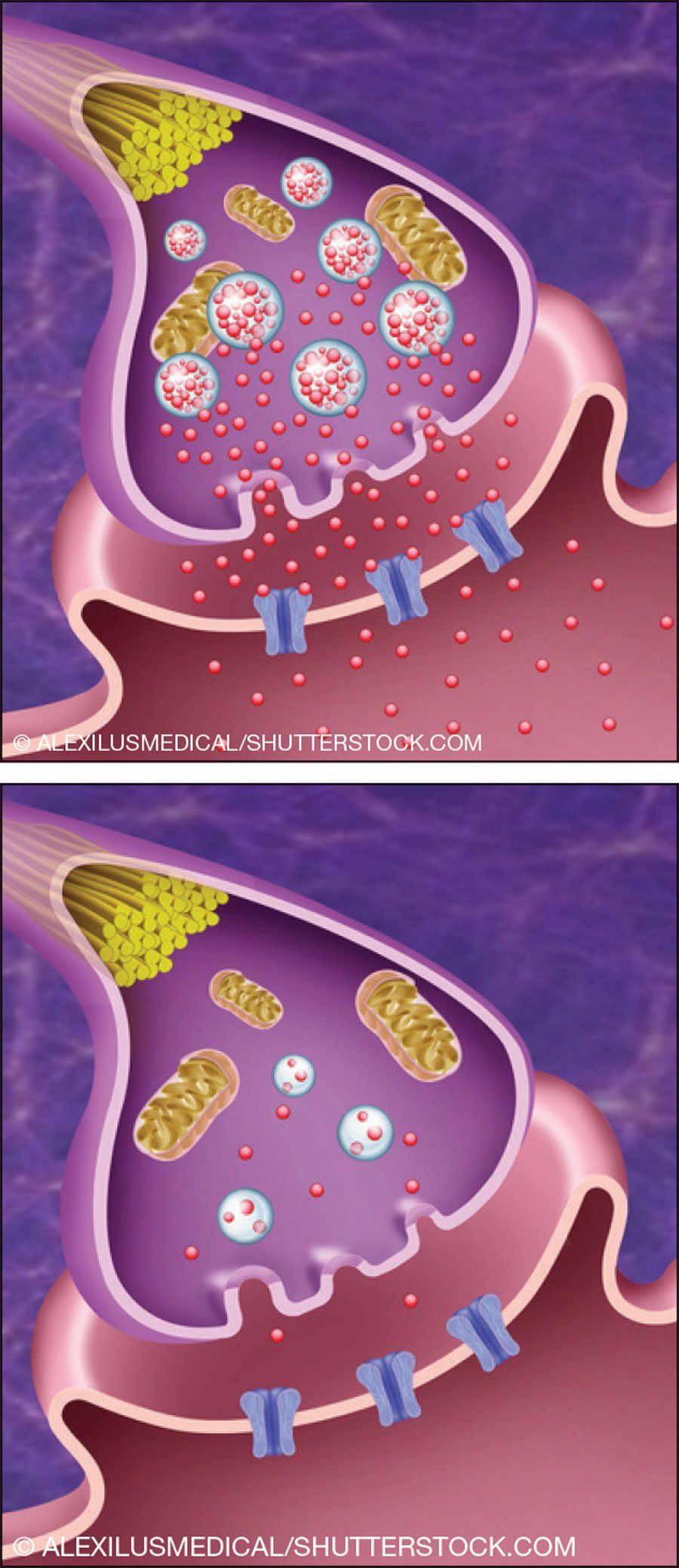Publication
Article
Psychiatric Times
Tardive Dyskinesia: Finally Some Good News
Author(s):
We’ve been waiting since 1953, the year chlorpromazine was introduced to the US as a revolutionary treatment for schizophrenia, for an active treatment for tardive dyskinesia that the FDA judged to be effective.
© ALEXILUSMEDICAL /SHUTTERSTOCK.COM

From the Editor
By now, nearly every one of us is sick of trying to decipher the recent news reports for veracity. But fear not, here’s one that is guaranteed to be true. Just a few weeks ago, the FDA approved valbenazine (to be marketed as Ingrezza by Neurocrine Biosciences) as the first treatment specifically indicated for tardive dyskinesia (TD).1
Those of us who came into psychiatry some decades ago, before the advent of the newer generation of antipsychotic medications, with their putative lower risk, were trained to be particularly vigilant for TD. We were taught that this severe adverse effect of first-generation drugs was possibly reversible if caught early enough, but most often was irreversible. Among the severe adverse effects of antipsychotics, neuroleptic malignant syndrome (NMS), thankfully rare, can be acutely fatal in about 10% of cases.2 Aggressive, rapid intervention is needed to treat this severe problem.
Movement disorders-a more common adverse effect of antipsychotics-have, as you know, 2 major types. Akathisia, a generally reversible movement disorder with primarily extrapyramidal symptoms, is treated-other than by discontinuation or reduction of the dosage-primarily by using benztropine, which may be preventive in some cases; propranolol; clonidine; or one of several benzodiazepines.
We’ve been waiting since 1953, the year chlorpromazine was introduced to the US as a revolutionary treatment for schizophrenia, for an active treatment for tardive dyskinesia that the FDA judged to be effective.
While less severe than the other 2 major adverse effects mentioned here, akathisia is extremely uncomfortable. I had a brief case back in my 30s when I was treated with Phenergan for a severe GI viral infection and had become quite dehydrated. I assure you that even though we consider this to be a relatively less severe effect than TD or NMS, the level of discomfort would be difficult for anyone to tolerate for more than a brief period.
When the newer generation of antipsychotics was introduced, the marketing folks trumpeted the news that worries about most movement disorders were a thing of the past. Of course, as we learned soon enough, that turned out to be fake news.
No one has yet been able to discern the specific etiology of TD, although it is thought to be related to long-term, at times quite brief, exposure to dopamine receptor blockers such as the antipsychotic medications we all use. Valbenazine is described by Neurocrine as a selective vesicular monoamine transporter 2 (VMAT2) inhibitor. I’ll leave further detailed discussion of the pharmacology of this medication to those far more expert than I am in future Psychiatric Times reports. It should already be on the market by the time you are reading this. Of course, it isn’t cheap, folks, much like many recent breakthrough medications, with an annual cost likely to be in the tens of thousands of dollars.
There is no question about the severe detrimental impact of TD on quality of life for those afflicted as well as the potential for increased risk of significant negative health impact in some patients. But, of course, it will be interesting to see how much restriction of prescribing will come from large insurers or health systems. I hope there will be ready availability, just as there is for the new hepatitis C medications, which cost at least as much.
Valbenazine was shown in the FDA-required clinical trials to be effective in reducing the symptoms of TD in as little as 6 weeks, and some patients showed continued improvement during almost a year of treatment. Like all medications, there are adverse effects, some of which can be worrisome such as QT prolongation. Unlike another drug being reviewed for use in TD, deutetrabenazine, however, there is no FDA-required warning regarding increased risk of depression and suicidal ideation.
Related content:
Promising New Option for Treatment of Tardive Dyskinesia
Deutetrabenazine is presently approved for use in Huntington chorea. It is thought to be a reversible depletor of monoamines in nerve terminals. Some circulating metabolites, just as valbenazine, are reversible VMAT2 inhibitors. It is possible that a decision about approval for tardive dyskinesia may be coming in the not too distant future.
We’ve been waiting since 1953, the year chlorpromazine was introduced to the US as a revolutionary treatment for schizophrenia, for an active treatment for TD that the FDA judged to be effective. As with all such advances that have an incredibly long gestation, hopes are high. And, to be even more hopeful, the research that led to this medication’s development may lead us to more answers both about schizophrenia itself and tardive dyskinesia. And that’s a really good and true thing.
References:
1. FDA News Release. FDA approves first drug to treat tardive dyskinesia. April 2017. https://www.fda.gov/NewsEvents/Newsroom/PressAnnouncements/ucm552418.htm. Accessed April 14, 2017.
2. Tasman A, Kay J, Lieberman JA, et al. Psychiatry.4th ed. New York: Wiley Blackwell; 2015.






